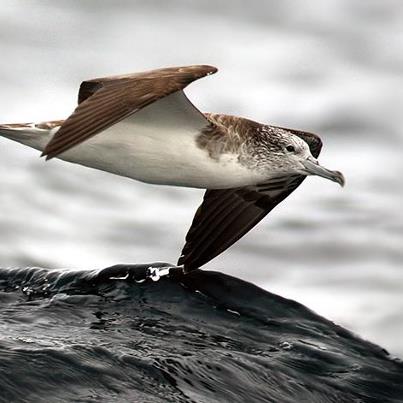Kirk Hart (Korea Institute of Ornithology & Department of Biology, Kyung Hee University, Seoul, Korea) and colleagues have published in the journal Forktail on the status and conservation of the Streaked Shearwater Calonectris leucomelas on the Korean Peninsula.
The paper’s abstract follows:
“About 90% of the global population of Streaked Shearwaters Calonectris leucomelas breed on islands in the seas around Japan. The species’s [sic] status and distribution in Japan is fairly well documented, but for the Korean part of the breeding range, only limited information in Korean language sources exists. The species was first described in Korea in the 1880s and first studied on the breeding grounds by Japanese researchers in 1923. Our objectives were to compare and update information on the distribution of Streaked Shearwaters around the Korean Peninsula and discuss threats and conservation. An extensive literature review was undertaken and we made field visits to Chilbal Island, Ulleung Island, Gwan-eum Island and Juk Island to assess the presence and status of the species at these locations. In total, we collated data from 27 Korean islands of which 19 had confirmed Streaked Shearwater colonies, four possibly had colonies, one had no colony and the species had probably been extirpated from the other three. The biggest threat to the Korean colonies is from introduced predatory mammals such as rats Rattus sp. and domestic cats and dogs. Introduced predators are present on at least 10 of the 24 islands where Streaked Shearwaters currently breed, have bred or are evidently present. Introduced species severely reduce reproductive success on Sasu Island and have caused or contributed to extirpation on three other islands. Other threats include fisheries bycatch, oil spillage and military activity.”

Streaked Shearwater
Reference:
Hart, K.A., Choi, C.-Y., Bond, A.L., Humphries, G.R.W., Yoo, J.-C. & Nam, K.-B. 2015. Streaked Shearwaters Calonectris leucomelas of the Korean Peninsula: distribution, status and potential threats. Forktail 31: 55–63.
John Cooper, ACAP Information Officer, 20 May 2016

 English
English  Français
Français  Español
Español